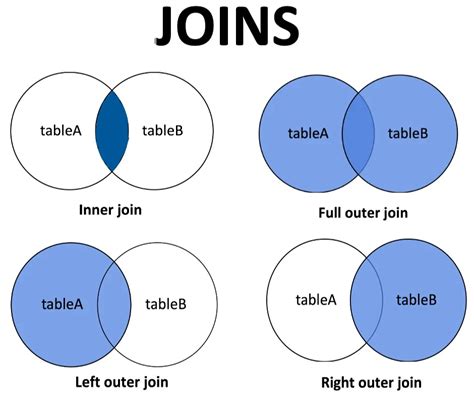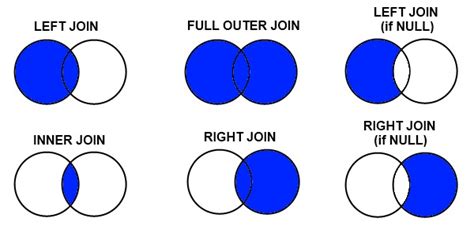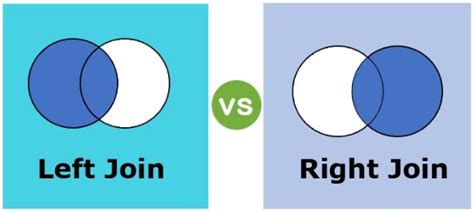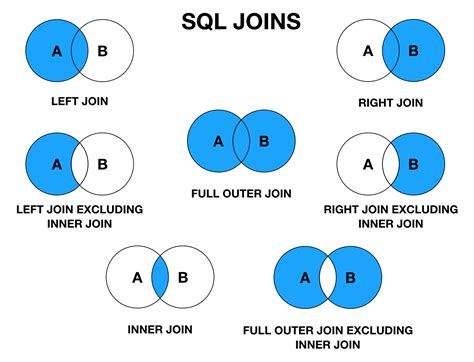Left Join vs Right Join

Introduction to SQL Joins

When working with databases, it’s common to encounter situations where you need to retrieve data from multiple tables. This is where SQL joins come in, allowing you to combine rows from two or more tables based on a related column. There are several types of joins, including Inner Join, Left Join, Right Join, and Full Outer Join. In this article, we’ll focus on the difference between Left Join and Right Join, exploring their syntax, usage, and examples.
Left Join

A Left Join, also known as a Left Outer Join, returns all the rows from the left table and the matching rows from the right table. If there’s no match, the result will contain null values on the right side. The syntax for a Left Join is:
SELECT column_names
FROM table1
LEFT JOIN table2
ON table1.column_name = table2.column_name;
For example, suppose we have two tables: Customers and Orders.
| Customer ID | Name |
|---|---|
| 1 | John Smith |
| 2 | Jane Doe |
| 3 | Bob Brown |

| Order ID | Customer ID | Order Date |
|---|---|---|
| 101 | 1 | 2022-01-01 |
| 102 | 1 | 2022-01-15 |
| 103 | 2 | 2022-02-01 |
| Customer ID | Name | Order ID | Order Date |
|---|---|---|---|
| 1 | John Smith | 101 | 2022-01-01 |
| 1 | John Smith | 102 | 2022-01-15 |
| 2 | Jane Doe | 103 | 2022-02-01 |
| 3 | Bob Brown | null | null |
Right Join

A Right Join, also known as a Right Outer Join, returns all the rows from the right table and the matching rows from the left table. If there’s no match, the result will contain null values on the left side. The syntax for a Right Join is:
SELECT column_names
FROM table1
RIGHT JOIN table2
ON table1.column_name = table2.column_name;
Using the same example as before, if we perform a Right Join on the Customers and Orders tables, we’ll get:
| Customer ID | Name | Order ID | Order Date |
|---|---|---|---|
| 1 | John Smith | 101 | 2022-01-01 |
| 1 | John Smith | 102 | 2022-01-15 |
| 2 | Jane Doe | 103 | 2022-02-01 |
Key Differences

The main difference between Left Join and Right Join is the order of the tables and the way they’re combined. A Left Join returns all rows from the left table, while a Right Join returns all rows from the right table. To illustrate this, consider the following: * If you want to retrieve all customers and their corresponding orders, use a Left Join. * If you want to retrieve all orders and their corresponding customers, use a Right Join. It’s worth noting that some databases, like MySQL, support the
USING clause instead of ON for specifying the join condition.
📝 Note: When working with joins, it's essential to understand the relationships between tables and the type of join you're using to avoid unexpected results.
Best Practices

When using Left Join and Right Join, keep the following best practices in mind: * Use meaningful table aliases to improve readability. * Specify the join condition clearly using the
ON or USING clause.
* Be aware of the null values that may appear in the result set.
* Use indexes on the join columns to improve performance.
* Avoid using SELECT * and instead specify the columns you need to reduce the amount of data transferred.
In summary, Left Join and Right Join are powerful tools for combining data from multiple tables. By understanding the differences between these two types of joins and following best practices, you can write more efficient and effective SQL queries.
To recap, the key points are: * Left Join returns all rows from the left table and matching rows from the right table. * Right Join returns all rows from the right table and matching rows from the left table. * The order of the tables and the join condition are crucial in determining the result set. * Use meaningful table aliases, specify the join condition clearly, and be aware of null values.
What is the main difference between Left Join and Right Join?

+
The main difference between Left Join and Right Join is the order of the tables and the way they’re combined. A Left Join returns all rows from the left table, while a Right Join returns all rows from the right table.
When should I use a Left Join instead of a Right Join?

+
You should use a Left Join when you want to retrieve all rows from the left table and matching rows from the right table. This is typically the case when you’re retrieving data from a table that has a one-to-many relationship with another table.
Can I use both Left Join and Right Join in the same query?

+
Yes, you can use both Left Join and Right Join in the same query. However, this can make the query more complex and harder to read, so it’s essential to use meaningful table aliases and specify the join conditions clearly.